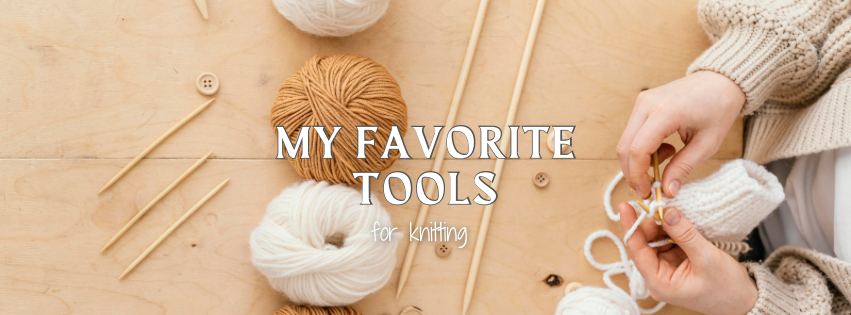
My Favorites: Tools to Knit With
Share
Knitting requires, of course, specific tools. Each knitter will develop an affinity for particular brands and styles of tools, and of course, I have my own favorite tools to knit with. Here are a few of the items I use regularly.
Needles
Most often, I knit with circular needles. These are needles that are connected to each other by a cord. I find shorter needles easier to use, but I need more than just a few inches for most projects for my stitches. Circular needles give me the length without having to wave around long needles.
Also, circular needles can be used when knitting flat (back and forth) and in the round. Straight needles can only be used for knitting flat. Double-pointed needles (DPNs) can be used to knit in the round, but you will have to juggle five or more needles (I've seen some folks use just four, but that's still a lot of needles).
My favorite circular needles are the Knitter's Pride Dreamz Interchangeables. By using interchangeable tips, I only need one cord and pick the size of the tips for the project. I do, of course, have multiple cables; how else can I have multiple projects going simultaneously?
I also have Knitter's Pride Dreamz Double Pointed Needles in all sizes from 2mm/US 0 to 3.75mm/US 5; I've used these for socks and sleeves. However, I prefer my Addi FlexiFlip Needles for socks these days. They have a short cable between the tips so that they can be used for smaller-diameter items like socks and sleeves, but only three needles are required.
Stitch Markers
Stitch markers have many different uses. Not only are they used to mark the beginning of a round or where to make a decrease, but they can also be used to showcase your personality.

Locking stitch markers are great because they can be easily moved or attached to the stitch itself. For example, I use them when making sleeves to mark where the decreases are to track how many I've made. Another use is to see how far you've progressed: attach a marker to a stitch when you start, and it's easy to see how far you've progressed after a while.
Small stitch markers are great for marking repeats. In many patterns, a series of stitches is repeated multiple times. Marking the spots where each repeat starts helps ensure you stay on track in the right place. Or you notice where you screwed up sooner. Using the smaller markers keeps the needles from getting too crowded.
Dangling stitch markers add fun to your project. These are great to mark the beginning of a round. Also, many sock patterns are written for four DPNs, so I use dangling stitch markers on my Flexi Flips to indicate where the needles would change if I were using DPNs. There are lots of different styles, and whatever you're interested in, there will surely be stitch markers to match.
Blocking Tools
I found a set of kids' interlocking play mats at Aldi, and I use those for my blocking. They work just fine. You can get Knitting Blocking Mats, too. I also have T-pins from the office supply store; they sell them in boxes of 100. What I did splurge on are my Knitter's Pride Rainbow Knit Blockers. They are little "combs" that make applying the equivalent of multiple needles along a project's edge easier.
When I block my finished knits, I also use a little Soak Wash in the water. This helps condition the yarn and gives the garment a lovely scent (if you desire it). Soak also does not require rinsing and can be used to wash your knit garments. My favorite is Pineapple Grove.
Winding Yarn
Some yarn comes in balls that are ready to knit from. Some yarn, especially hand-dyed yarn, comes in skeins which are big loops that are twisted up to keep them from tangling but aren't conducive to knitting from as is. These skeins need to be wound into cakes or balls.
@finnishedknits I’m heading out of town for the weekend so I have to get ready. Yarn that comes in skeins has to be wound into cakes or balls so they’re easier to knit with. #knitting #neulonta #knittok #yarn #yarncake ♬ You Spin Me Round (Like a Record) - Dead Or Alive
The most important item for winding is a Yarn Ball Winder. This is the tool in the above video that does the actual winding. A secondary tool is a Yarn Swift. It is necessary to hold the skein so the yarn can be easily pulled from it while winding it. This can be accomplished by having someone else hold the yarn, putting it on the back of a chair, or several other methods. A yarn swift is useful because it eliminates the need for a helper, and unlike a chair, it spins around as the yarn is pulled..



